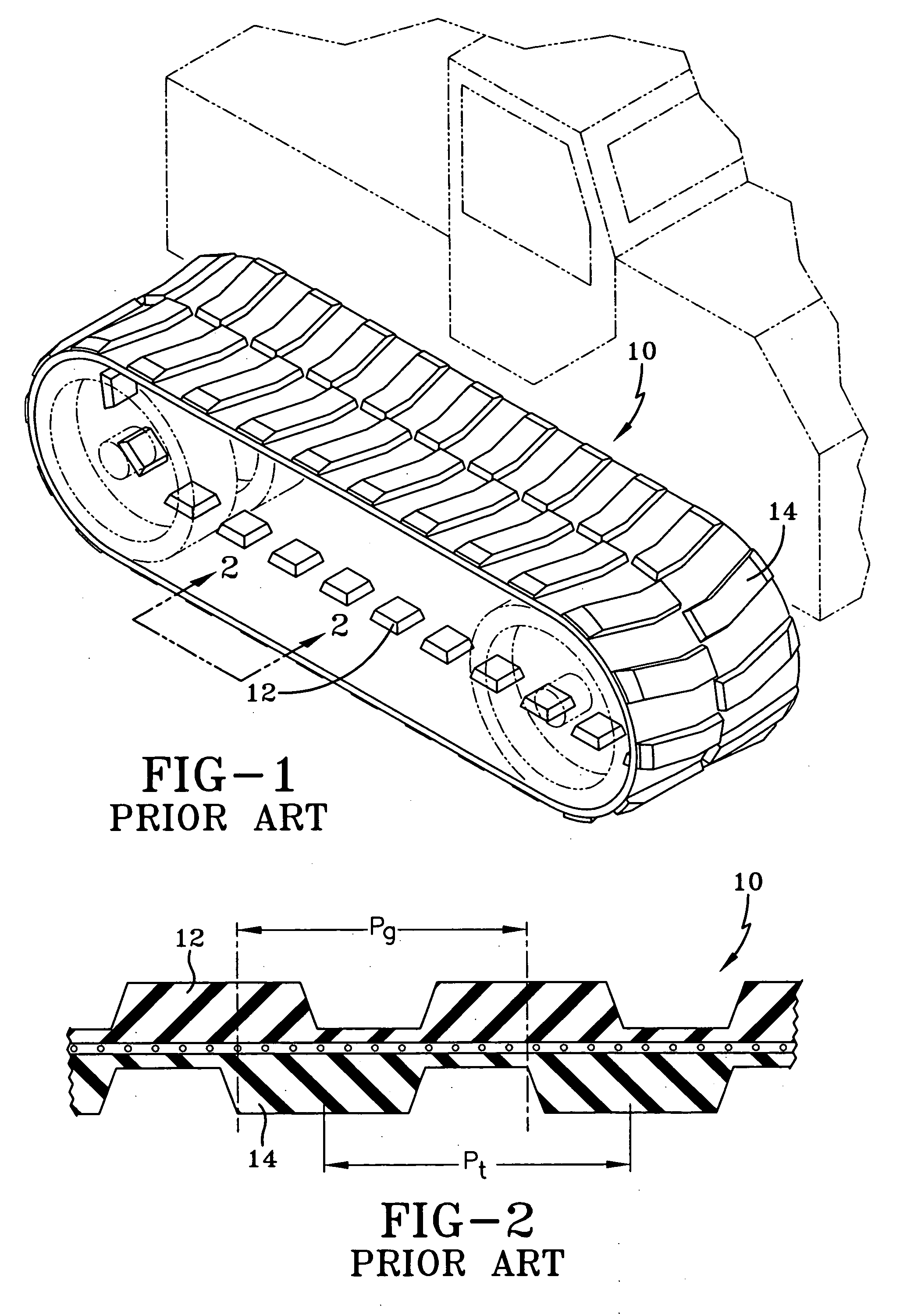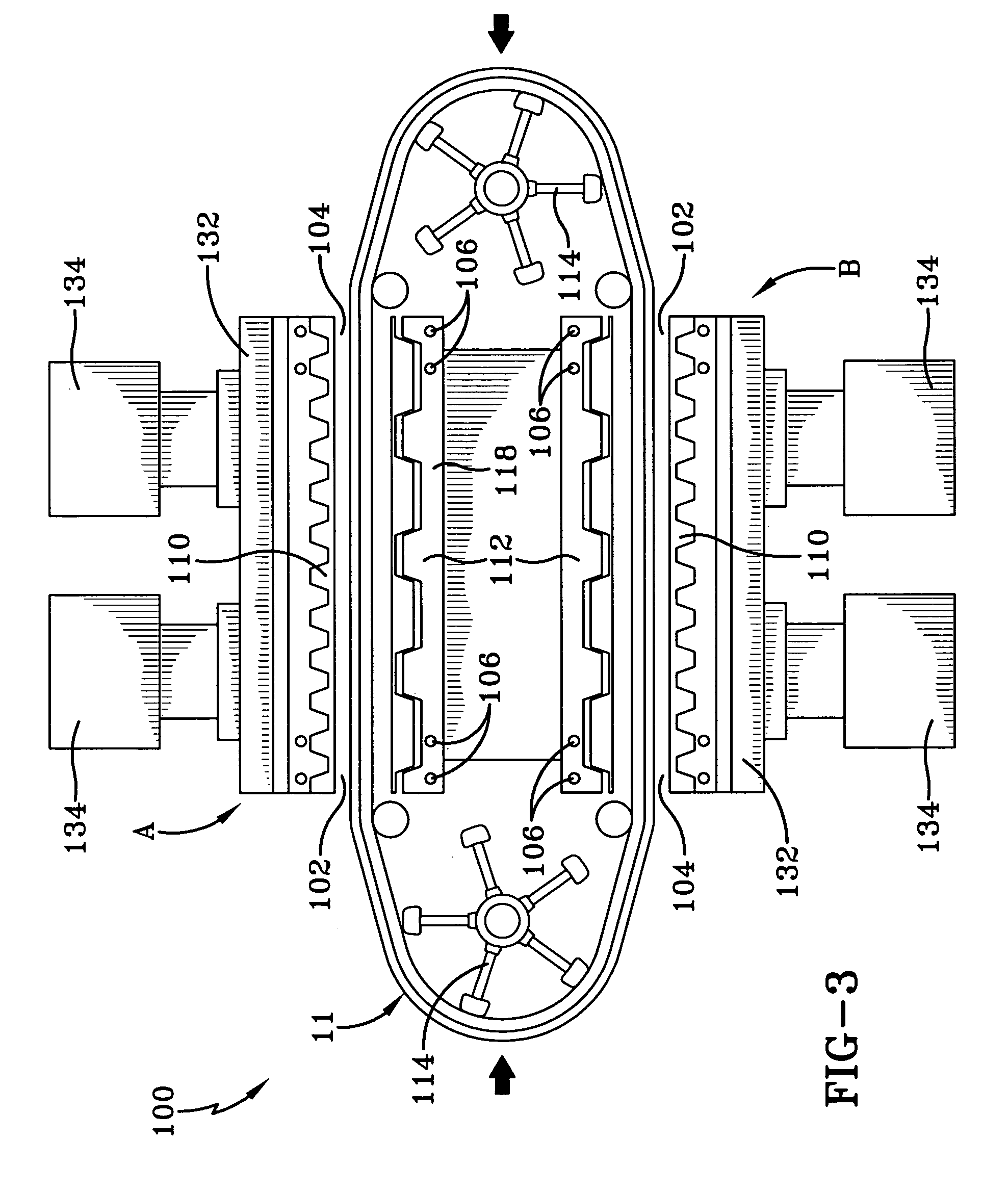Method to cure endless track belts
a technology of endless track belts and curing methods, which is applied in the field of curing large endless track belts, can solve the problems of guide lug pitch and tread lug pitch not being equal, and achieve the effect of reducing the number of lugs
- Summary
- Abstract
- Description
- Claims
- Application Information
AI Technical Summary
Problems solved by technology
Method used
Image
Examples
example 1
The Tread Lug Mold is Translated
[0026] A 378 inch rubber track is to be cured in an indexing mold. As shown schematically in FIG. 6, the track has a 6″ pitch guide with a total of 63 guide lugs. The track has 58 tread lugs with a 6.52″ tread pitch. The mold has a length of 102 inches. A portion of the track is cured in the mold during the first heat. The mold is opened and the track is indexed a distance X of 90 inches, although any multiple of the pitch guide may be used, for example, 12 inches, 18 inches, etc. Before the second heat begins, the lower mold half is slid or translated a distance T relative to the upper mold half. The distance T is determined by T=X−(Pn). In this example,
T=90−(6.52″*14).
T=−1.28″
[0027] Thus, the lower mold half is translated 1.28″ inches in the reverse direction of the track rotational direction (towards the right in the figure) so that the tread lugs of the mold align with the tread lugs of the track.
example 2
The Guide Lug Mold is Translated
[0028] A 252 inch rubber track is to be cured in an indexing mold. The track has a 6″ pitch guide with a total of 42 guide lugs. The track has 40 tread lugs with a 6.3″ tread pitch. The mold has a length of 44.1 inches. A portion of the track is cured in the mold during the first heat. The mold is opened and the track is indexed a distance X of 25.2 inches, although any multiple of the pitch tread may be used, for example, 12.6 inches, 18.9 inches, etc. Before the second heat begins, the upper mold half is slid or translated a distance T relative to the lower mold half. The distance T is determined by T=X−Pn* Where, [0029] P=pitch of translating lugs [0030] n=# of translating lugs being indexed
In this example, T=25.2″−(6″*4)
T=1.2″. The upper mold half is translated 1.2 inches towards forward (towards the left in the figure) so that the guide lugs of the mold align with the guide lugs of the track.
[0031] The number of pitches, n, should be chosen...
PUM
| Property | Measurement | Unit |
|---|---|---|
| Distance | aaaaa | aaaaa |
Abstract
Description
Claims
Application Information
 Login to View More
Login to View More - R&D
- Intellectual Property
- Life Sciences
- Materials
- Tech Scout
- Unparalleled Data Quality
- Higher Quality Content
- 60% Fewer Hallucinations
Browse by: Latest US Patents, China's latest patents, Technical Efficacy Thesaurus, Application Domain, Technology Topic, Popular Technical Reports.
© 2025 PatSnap. All rights reserved.Legal|Privacy policy|Modern Slavery Act Transparency Statement|Sitemap|About US| Contact US: help@patsnap.com



